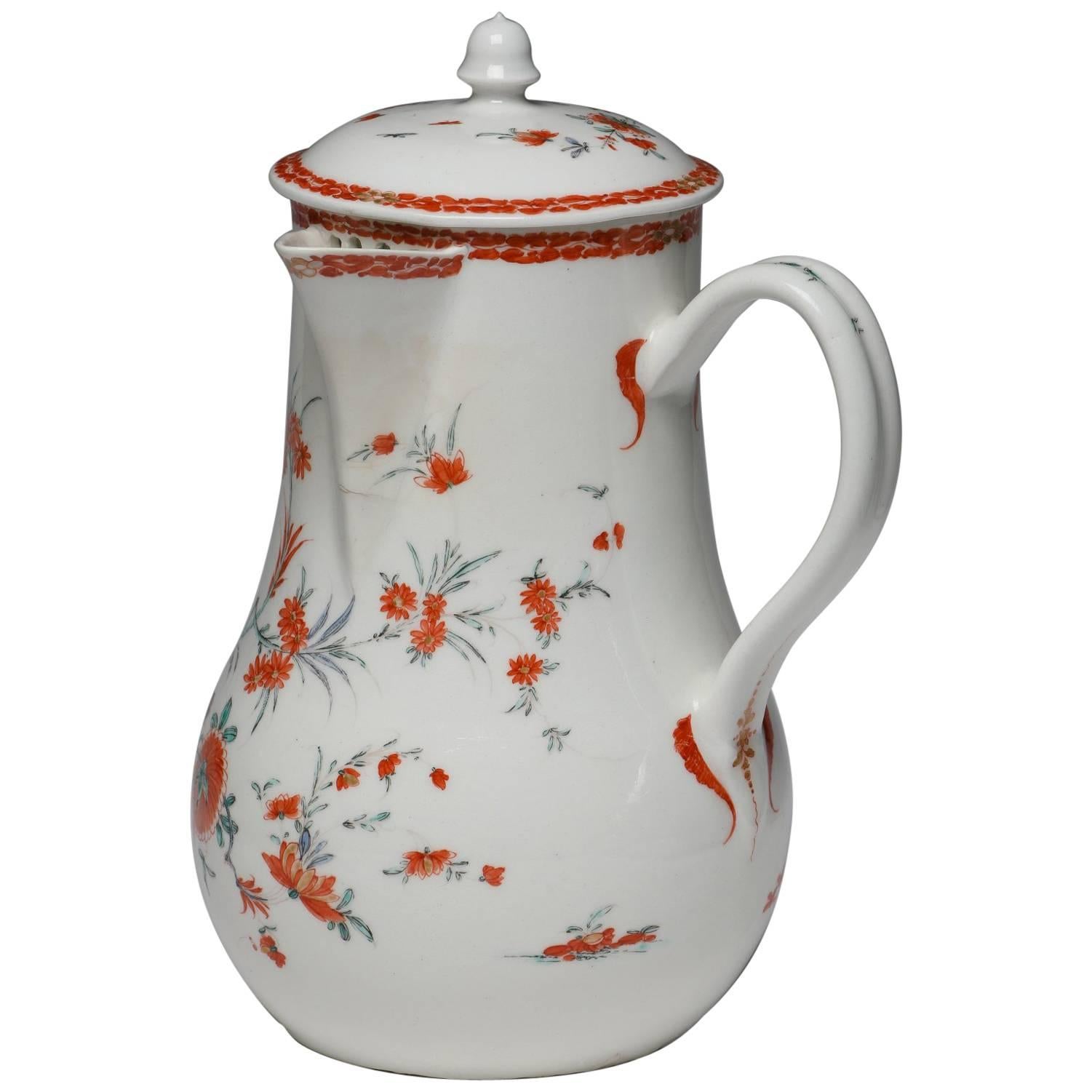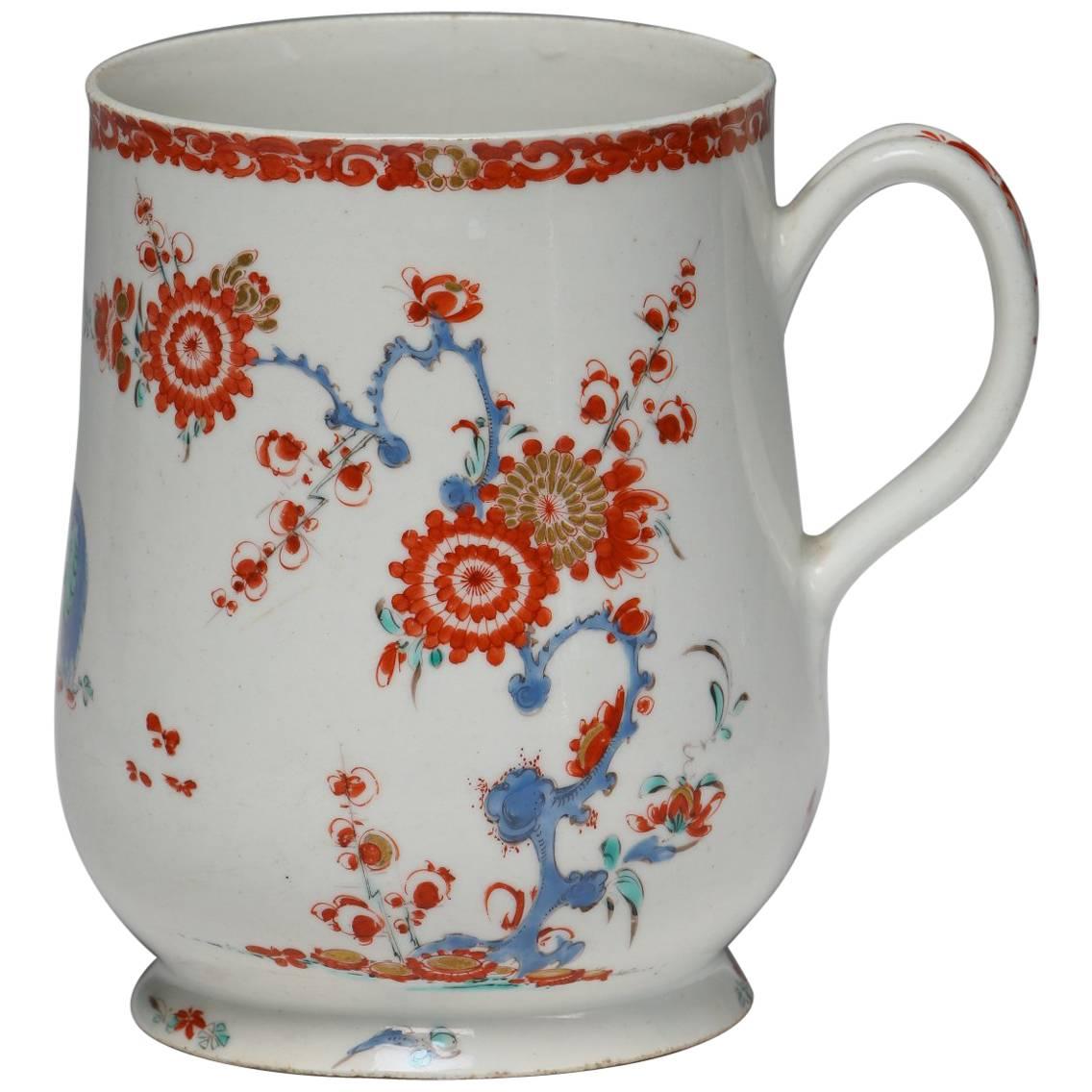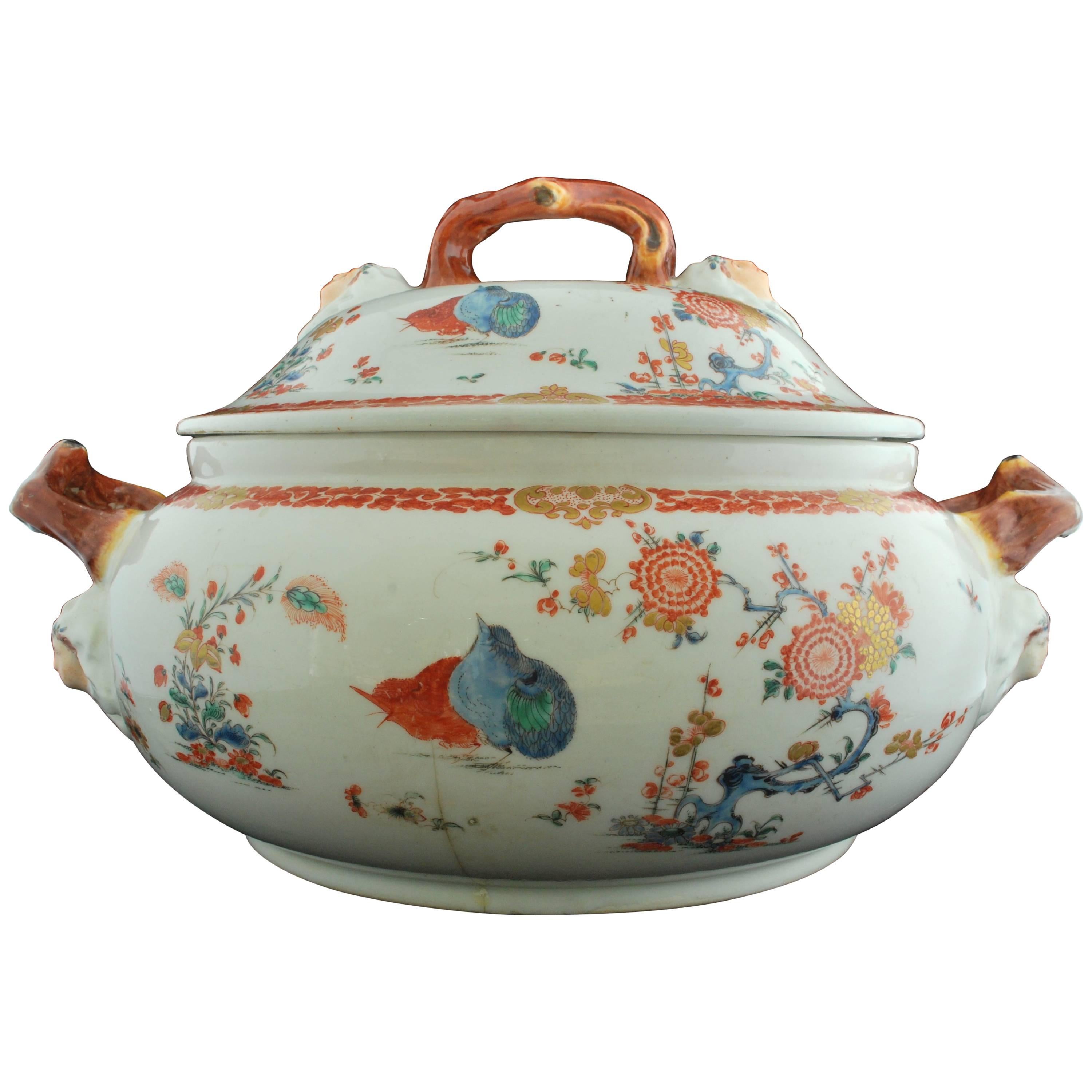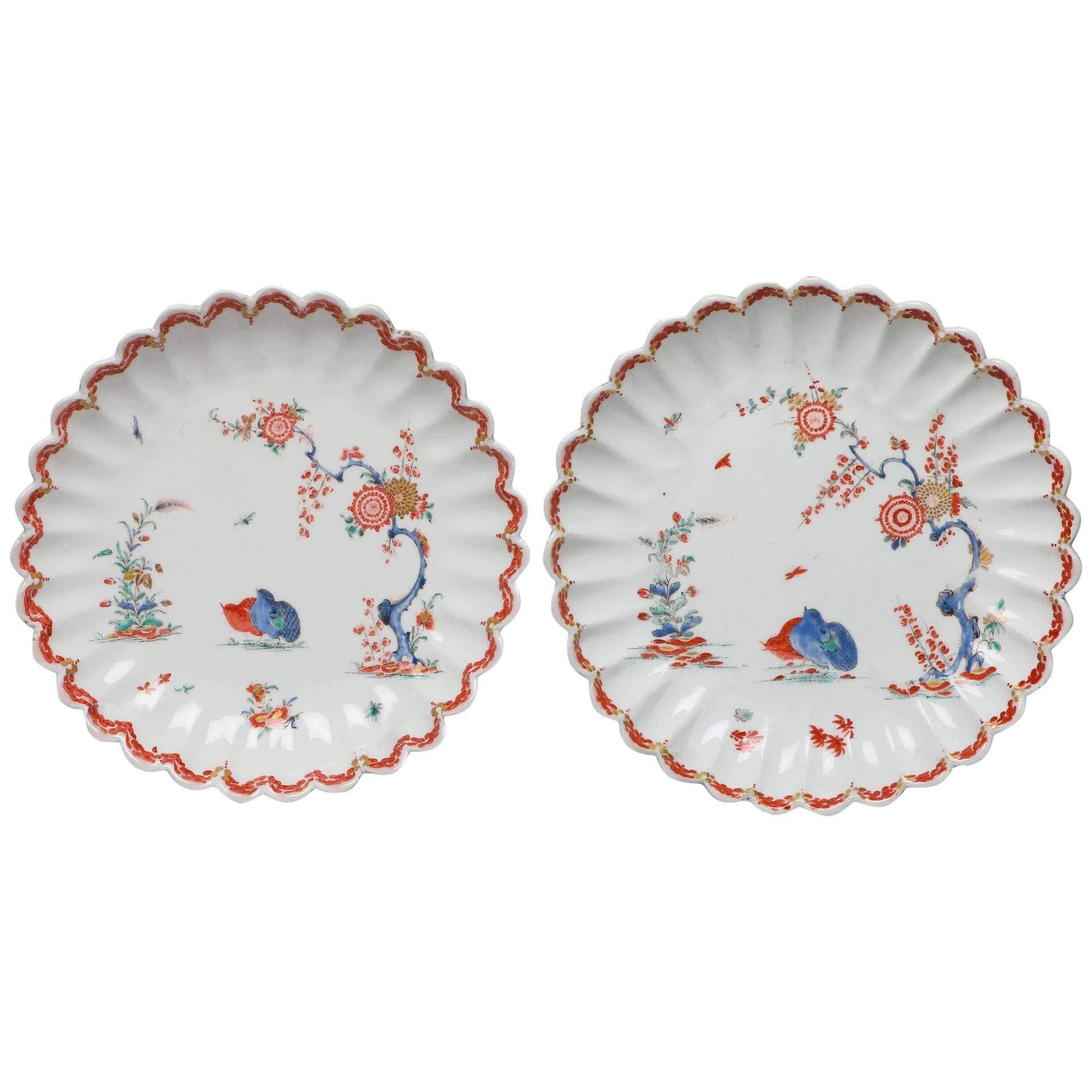Items Similar to Knife and Fork, Kakiemon Decoration, Bow Porcelain Factory, circa 1749
Want more images or videos?
Request additional images or videos from the seller
1 of 4
Knife and Fork, Kakiemon Decoration, Bow Porcelain Factory, circa 1749
About the Item
An unsually early set of handles with original steel tines and blade. Pistol grip form moulded with acanthus scrolls, leaves and swags and painted with indianische Blumen in a Kakiemon palette of iron-red, blue, green and black with gilding on red-brown.
Provenance: The Connoisseur’s Store; Taylor Collection.
- Creator:Bow Porcelain (Manufacturer)
- Dimensions:Height: 12 in (30.48 cm)Width: 0.5 in (1.27 cm)Depth: 0.5 in (1.27 cm)
- Sold As:Set of 2
- Style:Japonisme (Of the Period)
- Materials and Techniques:Porcelain,Molded
- Place of Origin:
- Period:
- Date of Manufacture:circa 1749
- Condition:
- Seller Location:Melbourne, AU
- Reference Number:
About the Seller
5.0
Gold Seller
These expertly vetted sellers are highly rated and consistently exceed customer expectations.
Established in 2005
1stDibs seller since 2017
69 sales on 1stDibs
Typical response time: 3 hours
- ShippingRetrieving quote...Ships From: Melbourne, Australia
- Return PolicyA return for this item may be initiated within 14 days of delivery.
More From This SellerView All
- Cup and Saucer, Kakiemon Decoration, Bow Porcelain Factory, circa 1753By Bow PorcelainLocated in Melbourne, VictoriaLow tea cup with clip handle with matching saucer, decorated after the Kakiemon with the two quail pattern. An unusual form with scarce decoration. Prov...Category
Antique Mid-18th Century English Japonisme Porcelain
MaterialsPorcelain
- Chocolate Pot, Kakiemon Decoration, Bow Porcelain Factory, circa 1755By Bow PorcelainLocated in Melbourne, VictoriaOf full-bellied pear-shape with large sparrow-beak lip set slightly below the top rim of the body in front of a triangle of circular pouring holes and at the right angle to the strap...Category
Antique Mid-18th Century English Japonisme Porcelain
MaterialsPorcelain
- Baluster Mug, Kakiemon Decoration, Bow Porcelain Factory, circa 1753By Bow PorcelainLocated in Melbourne, VictoriaPint mug of baluster form with flared base and grooved strap-handle with heart-shaped termination. The face of the mug painted after the Kakiemon with the two Quail pattern. The reve...Category
Antique Mid-18th Century English Japonisme Porcelain
MaterialsPorcelain
- Soup Tureen, Kakiemon Decoration, Bow Porcelain Factory, circa 1755By Bow PorcelainLocated in Melbourne, VictoriaOval tureen and cover, decorated after the Kakiemon in the two quail pattern; the crabstock handles and masks are interesting features. The tureen has had a rather unhappy life, appa...Category
Antique Mid-18th Century English Japonisme Porcelain
MaterialsPorcelain
- Baluster Vase, Kakiemon Decoration, Bow Porcelain Factory, circa 1748By Bow PorcelainLocated in Melbourne, VictoriaAn early example of bow’s output, with a smooth, silky glaze. Painted after the Kakiemon with a phoenix, butterfly and various plants after the Japanese; with reserved panels featuri...Category
Antique Mid-18th Century English Japonisme Vases
MaterialsPorcelain
- Pair of Fluted Dessert Plates, Kakiemon Decoration, Bow Porcelain FactoryBy Bow PorcelainLocated in Melbourne, VictoriaEach of shallow circular form with scalloped rim and painted in the Kakiemon two Quail pattern with a pair of partridges standing between a flowering prunus and a kikyo bush amidst f...Category
Antique Mid-18th Century English Japonisme Porcelain
MaterialsPorcelain
You May Also Like
- Bow Porcelain Orphaned Coffee Cup, Famille Rose Peony, circa 1755By Bow PorcelainLocated in London, GBThis is a very charming orphaned coffee cup made by the Bow Porcelain factory in about 1755. The cup is decorated in a Chinese "famille rose" peony pattern. This cup would have been part of a large tea service, and the tiny size shows how expensive coffee was in the 18th Century. The Bow Porcelain Factory was one of the first potteries in Britain to make soft paste porcelain, and most probably the very first to use bone ash, which later got perfected by Josiah Spode to what is now the universally used "bone china". Bow was the main competitor of the Chelsea Porcelain Factory, but where Chelsea made very fine slipcast porcelain, Bow made a different soft paste porcelain that tended to be softer and could be pressed into moulds. Bow served a larger public generally at lower prices. The factory was only in operation between 1743 and 1774, after which the tradition got incorporated into some of the later famous potteries such as Worcester and Derby. The cup is unmarked, which is normal for Bow items of this era. Condition report the cup is in excellent condition without any damage or repairs. There are various glazing imperfections, which are quite normal for porcelain of this era. Antique British porcelain...Category
Antique 1750s English Rococo Tea Sets
MaterialsPorcelain
- Chinese Export Porcelain Plate Kakiemon-Imari decoration, Qing Kangxi Ca 1700Located in Lincoln, LincolnshireThis is a beautifully hand painted Chinese Export porcelain Plate from the Qing, Kangxi period, 1662-1722. The plate is finely potted with a carefully cut base rim and a lovely rich...Category
Antique Early 18th Century Chinese Chinese Export Ceramics
MaterialsPorcelain
- Bow Complete Set of Porcelain Figures "The Four Elements", Rococo, circa 1765By Bow PorcelainLocated in London, GBThis is a very rare and impressive complete set of large figures called The Four Elements, made by the Bow Porcelain factory in about 1765. It consists of Ceres representing Earth, V...Category
Antique 1760s English Rococo Figurative Sculptures
MaterialsPorcelain
- Bow Porcelain Figure of Boy or Putto on C-Scroll Base, Georgian circa 1760By Bow PorcelainLocated in London, GBThis is a wonderful little figure of a boy or putto made by the Bow Porcelain factory in about 1760. The Bow Porcelain Factory was one of the first potteries in Britain to make soft...Category
Antique 1760s English Rococo Figurative Sculptures
MaterialsPorcelain
- 18th-cebtury Bow Porcelain Chinoiserie TankardBy Bow PorcelainLocated in Downingtown, PABow porcelain Chinoiserie tankard, Bow, London, 1760-1765. The unusually painted polychrome Bow porcelain tankard depicts Chinoiserie figure...Category
Antique Mid-18th Century English Georgian Barware
MaterialsPorcelain
- Bow Pair of Porcelain Figures, Arlecchino and Columbina, Rococo ca 1758By Bow PorcelainLocated in London, GBThis is a wonderful pair of figures of Arlecchino and Columbina, made by the Bow Porcelain factory in about 1758. These figures formed part of a series of the Commedia dell'Arte, a very popular series of theatrical figures that served as decoration at the dinner table in the 18th Century. The Bow Porcelain Factory was one of the first potteries in Britain to make soft paste porcelain, and most probably the very first to use bone ash, which later got perfected by Josiah Spode to what is now the universally used "bone china". Bow was the main competitor of the Chelsea Porcelain Factory, but where Chelsea made very fine slipcast porcelain, Bow made a different soft paste porcelain that tended to be softer and could be pressed into moulds. Bow served a larger public generally at lower prices. The factory was only in operation between 1743 and 1774, after which the tradition got incorporated into some of the later famous potteries such as Worcester and Derby. These figures were used to adorn the dinner table when dessert was served; groups of figures served to express something about the host, the guests, or to direct the conversation. The Italian Commedia Dell'Arte, a comical form of masked theatre, was very popular in those days and Bow copied many figures of the German Meissen series that were brought out in the decades before. This pair dates from about 1758, which was at the height of Bow's ability to make beautiful figurines often copied from Chelsea or Meissen. The pair is modelled after a Meissen pair by Kaendler. The porcelain is translucent with a beautiful milky glaze - Bow was probably the first pottery using bone in its porcelain recipe. Arlecchino (Harlequin) is playing the bagpipes, dressed in an odd costume of mismatched chintz and playing cards and wearing a funny black trumpet...Category
Antique 1750s English Rococo Figurative Sculptures
MaterialsPorcelain
Recently Viewed
View AllMore Ways To Browse
Porcelain Black
Porcelain Set Circa
Blue Bow
Red Bow
Knife Fork
18th Century Blue Porcelain
Knife And Fork
Blue And Green Porcelain
Early Set Of Porcelain
Knife Fork Set
Knife And Fork Set
Green Bow
Porcelain Green Set
Antique Glass Knife
Antique Knife Set
Antique Knife Sets
Antique Fork And Knife
Antique Knife And Fork





